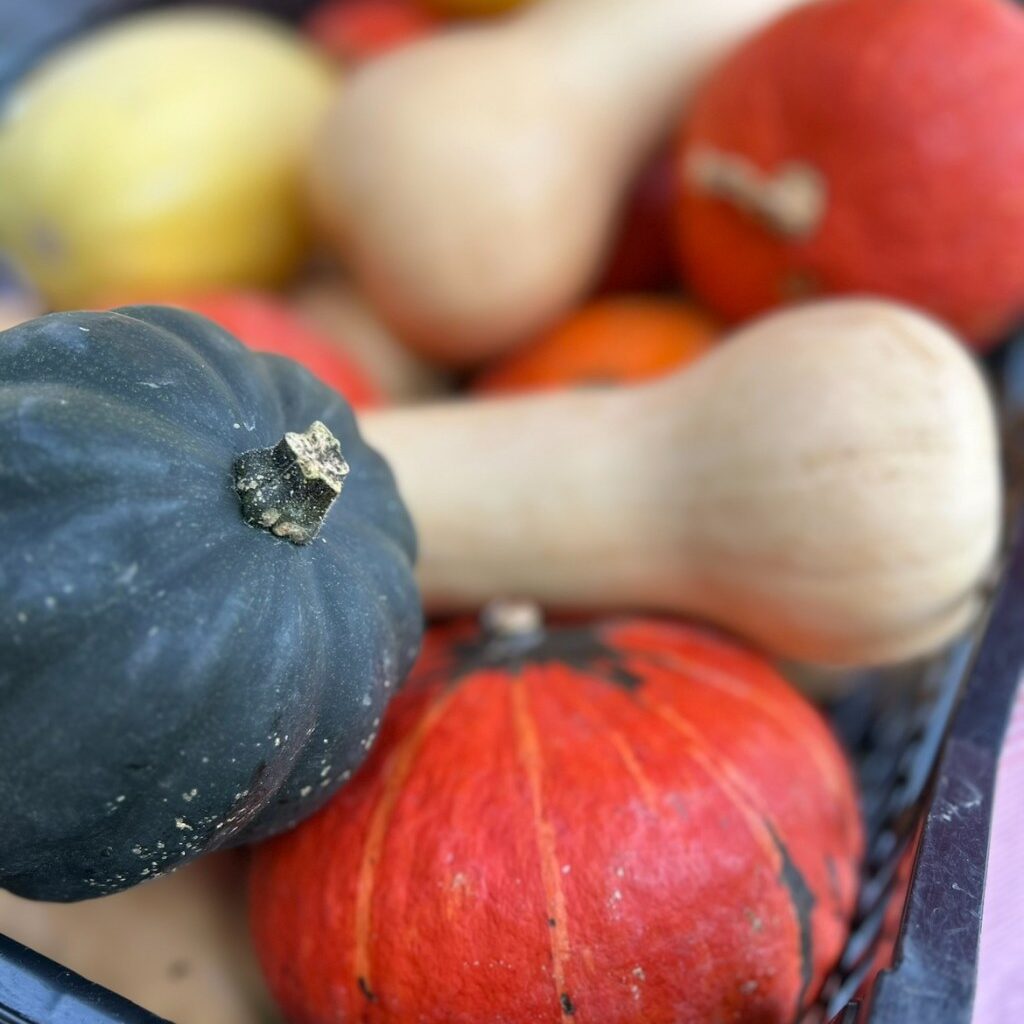As the golden light of October softens over Pennsylvania’s hills, our fields and gardens offer up their final, abundant gifts.
The air carries that unmistakable blend of earth and fallen leaves, a scent that signals both completion and continuation. During harvest, farmers and the earth work side by side, their rhythms intertwined in abundance.
Tables at the farmers market brim with the deep colors of the season, multi-colored squash, ruby red beets, crisp apples in many shades and baskets of hearty greens still thriving in the cool air. Each one is a reminder that even as the year slows, the earth continues to provide generously.
From our farmers’ hands to your table, every carrot, cabbage and sweet potato tells a story of devotion to early mornings, weather-worn patience and the careful tending of soil and seed.
Autumn has always been a time of gratitude. Yet even as we prepare to slow our pace, we are fortunate to live in a region where the growing season stretches longer with diligence. Through the dedication and innovation of our farmers (the use of high tunnels, cold frames and fall crop varieties) fresh, local food continues well into the colder months.
This means our market can carry on through winter, shifting to a biweekly schedule rather than weekly, but still offering a beautiful variety of produce and local goods.
You’ll still find crisp greens, sweet storage carrots and potatoes, earthy mushrooms, onions, garlic, winter squash and more, all grown right here in Pennsylvania soil. Many of these late-season crops actually improve in flavor with a touch of frost, their natural sugars deepening as the temperatures drop. So while the air grows chillier, your meals can stay vibrant, rooted in the nourishment of our local land.
An interesting phenomena is winter sweetening: when root crops and some greens convert stored starches into sugars in response to cold, making them taste sweeter after a light frost. This is true for carrots, beets, turnips and even brassicas like kale and Brussels sprouts.
That means lateness in the season doesn’t always mean diminished quality, sometimes flavor intensifies as the cold creeps in. So we could say root vegetables, brassicas, and hardy greens are your fall heroes.
Supporting the market through the winter months helps keep this local food system strong and thriving. It ensures that the farmers who nurture our community through the growing season can continue their work year-round, experimenting with season extension and resilient growing methods that benefit us all. It’s also a reminder that connection to the land doesn’t end with the last tomato. It evolves, just like the seasons.
Traditional systems like ayurveda and Chinese medicine teach that our digestion mirrors the natural world. Warm, cooked foods in the cooler months support our digestive fire, while raw, light foods in the summer prevent overheating.
Eating seasonally means we naturally shift our diet to what supports our body’s changing needs, more fiber-rich, grounding foods in fall; more cooling, hydrating foods in summer.
When we eat seasonally, we become more aware of where our food comes from, the farmers, the soil, the weather, the cycles of planting and harvest. Meals become an act of participation in nature’s rhythm, not just consumption.
This awareness naturally cultivates gratitude, mindfulness, a sense of belonging and nourishment that goes far beyond the physical. Eating seasonally brings us back into harmony with the land, the community and our own bodies. It’s a quiet form of medicine based on balancing digestion, boosting immunity and reminding us that nourishment is cyclical, abundant and ever-evolving.
So bundle up and meet us at the West Reading Farmers Market: weekly on Sundays through November, 10 a.m.-1 p.m., biweekly on Sundays December through April, 10 a.m.-noon.
Kendra Giangiulio is the manager of the West Reading Farmers Market.

